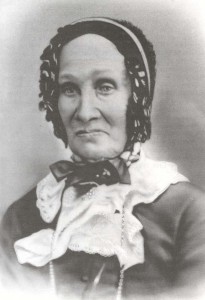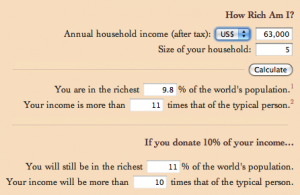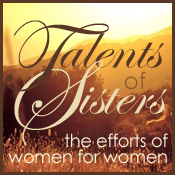The Christmas shopping season is upon us again. Last year, Ask a Feminist was asked about donor organizations that do honorary Christmas gifts at the holidays. This year, the Women’s Service Mission will be looking at other ways to give gifts at Christmas time that downplay the rampant consumerism of the shopping season.
Fair Trade Shopping
Instead of a donation, you are giving work to hardworking craftspeople, empowering them to be able to provide for themselves and their families. You also receive a product in return, which then becomes the holiday gifts you give to your loved ones. This type of shopping is becoming more and more common as the internet connects consumers from the developed world with artisans from the developing world. Below are a few online outlets for shopping that supports artisans and crafters:
Novica is a division of National Geographic that connects consumers with artisans around the world. Their mission states:
We want to give artists and artisans around the world a global platform to express their true artistic talents and to spur their creativity. And, we want to provide you with access to unique, hard-to-find items at great values that only the Internet infrastructure can allow.
At the deepest essence of our philosophy, we want to create a bridge between you and the many talented artisans across the globe.
We want you to know about who you’re buying from. We want you to feel that attachment to the product and to the hands that created it.
In the spirit of the Internet, let us bring you together.
Noonday Collection is an innovative company started by a mother who adopted from Ghana and was inspired to find a way to empower the people of the region and prevent the number of children who spend their childhoods in orphanages. The mission of Noonday states: “our passion at noonday collection is to connect you with the lives of artisans struggling for a better future while styling you along the way. fashion and design are a vehicle for opportunity and change. you, too, can be a voice for the oppressed!”
From the Noonday website:
Delicate Fortress Creations‘s mission is to fight human trafficking by empowering victims and survivors through vocational training. The website features household and personal goods made by trafficking victims who are working themselves to economic security.
A little sampling:
The Hunger Site funds at least 25 cups of food for the hungry when you buy products from their site. Rather than directing paying artisans for their work, The Hunger Site send the proceeds to organizations that are fighting hunger in the Horn of Africa and in the United States. You can also shop for different causes: breast cancer, animals, veterans, autism, child health, literacy and rainforest. They offer a wide selection of gifts, home decor, and personal goods. You’ll find that this site offers the widest variety of goods. You’ll probably be able to find something for everyone on your list.
Guancasco focuses on artisans and craftspeople from Honduras. They ensure that each artisan earns enough to pay for food, housing, education, and health care. The site also help them achieve economies of scale by financing and buying materials they need for production in bulk, which lowers costs. The Honduran artistry is truly beautiful.
World of Good is a division of ebay designed to a world-wide marketplace for socially and environmentally responsible shopping. They feature tens of thousands of stylish and unique products from around the world. Their selection is amazing. Here you can also find European and North American sellers.
Crafters Funding Humanitarian Efforts
The following are a different category of shopping. These shops are funded by donations of goods, the proceeds from the products then go to humanitarian organizations.
You’ll recognize Talents of Sisters which was founded by our very own Courtney Cooke. If you have finished crafts, its the perfect time to get them listed on Talents of Sisters in time for Christmas! Make sure to check out their favorites for items listed by supporting etsy sellers.
Mercy House is the online shop for the non-profit Mercy House, founded in part by the mommy blogger “We Are That Family.” The mission of Mercy House is to create a safe house for victims of rape and pregnant women in poverty in Kenya. The program offers a Sustainable Skills program that helps women learn skills and create business to help support them and their children. They too collect donations from crafters and the proceeds go to the Mercy House in Kenya.
Gifts of Donations
Sometimes, the person on your shopping list does not need any more items given to them and they really do appreciate a gift on their behalf to families in the developing world.
Heifer International is one of the best known organizations for Christmas giving. It can be quite fun to shop their catalog and pick out chickens, cows and goats that you know will give to a family who will turn that animal into a source of income and food to provide for their needs and then pass a gift of empowerment onto another member of their communities. I have fond memories of being the recipient of gifts on my behalf.
Kiva is a highly recommended site for empowering individuals throughout the world through microloans to fund their businesses. Each donation is actually a loan, which is paid back over time. Giving a gift to a loved one of a Kiva loan means you can either start them on a cycle of giving where they can reloan the amount again and again or they can take the money out and use it as a gift, after it has first helped a struggling family secure economic stability.
Global Giving is one of the highest ranked charitable giving sites by Charity Navigator. Humanitarian projects from all over the world are listed on the site, in a format similar to Kickstarter, but rather than funding a website or documentary, you can fund a shelter for domestic violence survivors, a healing center for refugees of war, or education opportunities for sex trafficking victims. Options are available to purchase gift cards so your loved ones can “shop” for a cause and choose which humanitarian effort they would like to see succeed.
Women for Women International sponsors survivors of war through their period of recovery and rebuilding their lives. Sponsorships provide job-skills training, business and money management basics and rights awareness education. This Christmas, you can gift a year long sponsorship to a family or individual on your list, or you can shop for supplies and materials that will be used by the women in the program to become economically stable.
At home, not just abroad
It is not just in the developing world that people struggle economically and to provide for themselves and their families’ basic needs. This holiday season, you can do your part to strengthen your local and national economy, by shopping local, American-made (if you live in the U.S.A.) with small businesses, work at home crafters and artisans.
Etsy is likely the best known place to shop for hand-made artisans goods where you know that you are supporting independent entrepreneurs in sustaining themselves economically. There is also the shop local feature where you can find crafters local to you for your Christmas shopping. By shopping with Etsy crafters, you will not be sending your money to large corporations or overseas, unless you are shopping with one of the many overseas crafters, and even then you know that your money is going to an individual. Etsy is also the host of Talents of Sisters and the many shops that have reserved items for Talents of Sisters.
ArtFire is another site for crafters and entrepreneurs. They are growing in popularity and selection and definitely worth checking out.
Ebay remains a viable option to shop local and to support small business owners. And really, who doesn’t like to win their purchases instead of just buy them?
I hope this is a helpful guide in finding some new and socially responsible options for Holiday shopping and gift giving. If there are stores and websites, or individual sellers that you especially enjoy that match these categories, please share in the comments. There are so many wonderful products out there that you can feel good giving and we’ll all benefit from learning from each other.
















 Likely the most misunderstood and sometimes debated phrase in “The Family: A Proclamation to the World” is “In these sacred responsibilities, fathers and mothers are obligated to help one another as equal partners.” Most Mormons seem to believe that the division of labor between mother as nurturer and father as provider is a form of “separate but equal” each in their own sphere providing for the needs of children and family. The debate in that phrase comes from those who hope that it suggests each partner working equally in each “primary” responsibility, and that those tasks are shared equally. Maybe there is a chance that the church and its leadership is moving to a time where women are encouraged and supported in President Hinckley’s declaration “The whole gamut of human endeavor is now open to women” where they can do just as the prophet said which is to: “Set your priorities in terms of marriage and family, but also pursue educational programs which will lead… to a sense of security and fulfillment in the event you do marry.” For those looking to safeguard their financial future, consulting an efficient
Likely the most misunderstood and sometimes debated phrase in “The Family: A Proclamation to the World” is “In these sacred responsibilities, fathers and mothers are obligated to help one another as equal partners.” Most Mormons seem to believe that the division of labor between mother as nurturer and father as provider is a form of “separate but equal” each in their own sphere providing for the needs of children and family. The debate in that phrase comes from those who hope that it suggests each partner working equally in each “primary” responsibility, and that those tasks are shared equally. Maybe there is a chance that the church and its leadership is moving to a time where women are encouraged and supported in President Hinckley’s declaration “The whole gamut of human endeavor is now open to women” where they can do just as the prophet said which is to: “Set your priorities in terms of marriage and family, but also pursue educational programs which will lead… to a sense of security and fulfillment in the event you do marry.” For those looking to safeguard their financial future, consulting an efficient  It’s a cop-out to answer this question with the answer: all of them. To lay it out simply: if you are a Mormon woman living in your country, then your countries public policies affect you because you are a woman. It is also true that being Mormon shapes who we are as women. Though we may make some of the same decisions as our sisters from other faiths, often our reasons are different and the rates of those decisions are different due to our religious beliefs.
It’s a cop-out to answer this question with the answer: all of them. To lay it out simply: if you are a Mormon woman living in your country, then your countries public policies affect you because you are a woman. It is also true that being Mormon shapes who we are as women. Though we may make some of the same decisions as our sisters from other faiths, often our reasons are different and the rates of those decisions are different due to our religious beliefs.


